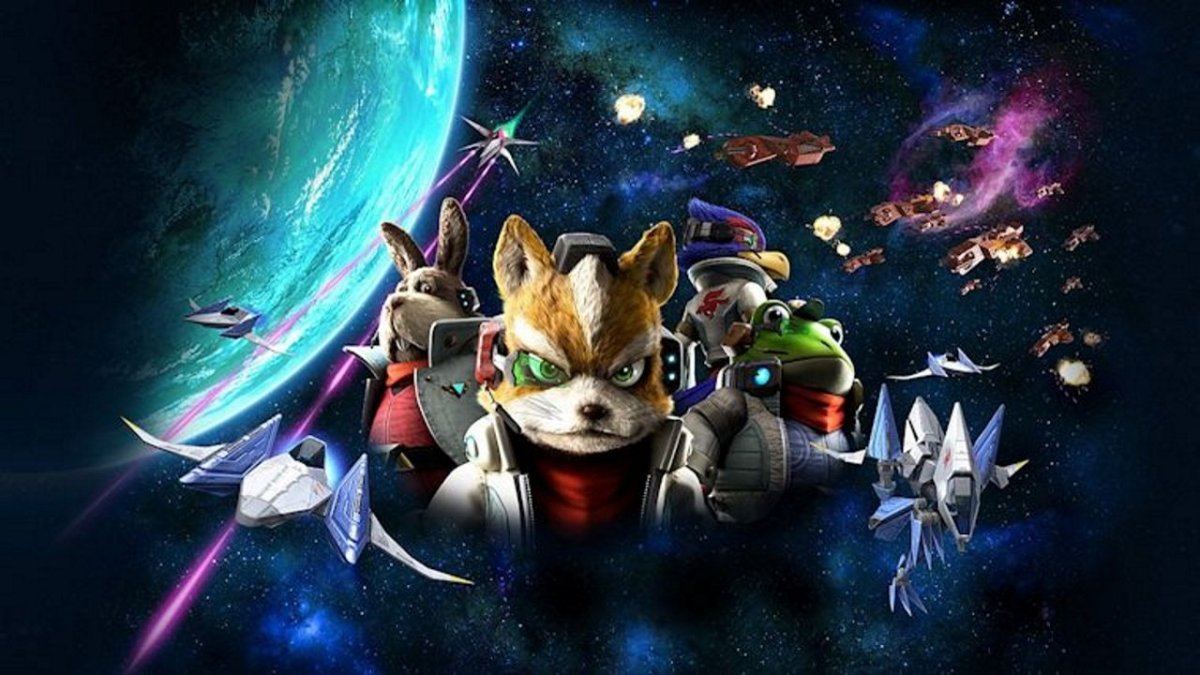Star Fox has been one of Nintendo’s most popular, and yet also most unstable series. The original SNES game was a true classic, pioneering 3D graphics on consoles, and creating a new top franchise for Nintendo. Following that came Star Fox 64, another classic that endeared itself to gamers around the world. However, after these two fantastic entries, Star Fox sort of went off on some tangents.
Star Fox Adventure changed things up significantly, and Nintendo’s attempts to bring the series back to its roots in Star Fox Assault and Command were met with mixed responses. Now, over ten years since the last main series release on consoles, we have Star Fox Zero. The game is a true return to form for the franchise, while still innovating and offering new elements. Unfortunately some of those new elements might not work as well as gamers had hoped.
Star Fox Zero is essentially a remake of the Nintendo 64 game, which was practically a remake of the original SNES title before it. This would likely not work for other series, but for Star Fox the story is truly just window dressing for the action gameplay that it contains. Andross’ forces are storming Corneria along with the rest of the Lylat System, and it is up to Star Fox and his crew to fight them off. It’s a story that you know well, and really for a game that is meant to revive a long dormant series, it was probably the right call to stick with it.

That familiarity extends through the story and into other aspects of Star Fox Zero. Most of the levels are some sort of remake of one from the Nintendo 64 title, though the team always shifted it enough to feel almost completely fresh. Essentially it’s just the name, art style, and general framework that is the same, how the level actually plays can feel totally different.
There is an elephant in the room, and its name is the Wii U Gamepad
This largely comes from a much larger, more varied, and really better designed roster of enemies. Star Fox Zero might throw a lot of the same enemy ships at you that you’ve seen before, but mixed in there are some that truly change the formula in significant ways. From stationary turrets, to crawling spiders with a small vulnerability on their back, figuring out how best to take on these foes is part of the fun, and Star Fox Zero is a whole lot of fun.
However, there is an elephant in the room, and its name is the Wii U Gamepad. Star Fox Zero uses the Gamepad quite heavily, having two totally separate camera views, and two different methods of control. First off, there’s the standard Star Fox view and controls, with the camera behind the ship as you move it around with the joystick, firing away. Then on the Gamepad (though you are able to swap which is on which, but this is the default) you are inside the cockpit, with a first person view of everything around you. This, so far is pretty great, but things get dicey when it comes to the Gamepad controls themselves.
Much like Splatoon, you are able to move the Gamepad around, tilting it in any direction, in order to move your targeting reticle on screen. Unlike Splatoon, this method of control is not very intuitive, and will largely cause players a decent amount of frustration, at least in the beginning. Getting used to Star Fox Zero’s control scheme is the toughest challenge of the entire game, with the Gamepad being the main issue. The idea is sound, giving you more control, and a lot more precision, but actually using the system can really take you out of the game, as you switch your eye line between the TV and the Gamepad, trying to target some very fast moving enemies.

Now, once you do get used to this, and everything begins to sync up, it can be truly magical. You sort of have reveletory moments here and there when everything works just as intended. Unfortunately these are not the norm, and they are more remarkable when they happen, due to being so rare. Still, the controls don’t totally ruin the game, they just take away a bit of the fun that Star Fox Zero could have contained. And things aren’t helped by how often the game takes control of your camera away from you, locking it onto some nearby enemy or object, and forcing you to use the Gamepad against your will.
Likewise, the Gamepad seems to have another detrimental effect on the game, in that performance can truly suffer. Normally Star Fox Zero will run at a solid 60fps, a crisp and smooth experience that truly delivers on the promising power of the Wii U. But once things really heat up, whether that is too many enemies on screen, or too many effects, that framerate can drop like a stone. It’s almost like an intentional bullet-time style effect sometimes, but overall it’s a glaring technical problem in a game that deserves better. It’s especially disappointing since the graphics as a whole aren’t all that impressive. It seems like the idea of pushing two simultaneous streams of video was so important that corners had to be cut almost across the board.
While all of these technical problems are unfortunate, the game overall is exactly what fans have been asking for from Nintendo for some time; a pure Star Fox game. Like the N64 title, the game is kept short, but the focus is on replayability. Each run through the game can have some sort of variation thanks to alternate paths through levels, warps to jump around the system, and different ways of reaching the end level. And, as you play through the game, you spend the vast majority of your time right inside the Arwing.
Star Fox has always had a very checkered history when it comes to anything happening outside of the Arwing. Star Fox Adventure was a good game, but Star Fox it was not. And in other titles in the series, there were some really poor moments involving other vehicles. Star Fox Zero does have other vehicles, but they all work well, and make sense for the universe.

First up is the Walker, which is actually a two-legged modification of the Arwing that was supposed to be introduced on the SNES sequel Star Fox 2. You can switch to this form at any time, making levels feel more explorable and engaging, as you might be able to spot some places where using it will be advantageous. Next up is the Landmaster, which was already well received in its N64 incarnation. It has a few new tricks, but overall it’s still a nice diversion off the main Arwing gameplay. Finally there is the Gyrowing, a stationary flying machine with a ridiculously cute robot companion inside. All of these vehicles control and play very differently, making for an interesting bit of gameplay, no matter which one you are using. Thankfully, the Arwing is used most of the time though, as it offers that classic feel that fans truly want.
However, if you aren’t one of those fans then Star Fox Zero might not feel like a fully satisfying game. The issue is the aforementioned focus on replayability, and the overall reliance on familiar Star Fox elements, even getting down to using the exact dialogue from the N64 game. Coming into this game fresh might feel a bit odd, as it doesn’t really act like a modern game, instead opting for a nostalgic feel, while updating things that really needed it.
There are also things lacking from Star Fox Zero that were present in previous games, such as multiplayer. There is a co-op mode, with one player aiming while the other controls the ship, but it’s not quite the same. Thankfully some additional modes and objectives do open up, but if the core concept of playing through a series of sometimes varied levels before taking on the final boss and seeing how you did, while trying to set new high scores along the way, doesn’t fit with your style then Star Fox Zero might feel a bit anemic.

Of course every physical copy of Star Fox Zero does come with Star Fox Guard, making it feel like a much better value, but you’ll have to check out our review of that individual title to see how that turned out.
The Verdict
Star Fox Zero is a glorious return to form for the franchise, bringing back almost everything you loved about the Star Fox games. But, not everything is perfect, in fact many areas of the game fall well short of expectations. The Gamepad seems to be the culprit, resulting in very odd control methods, an overall lower visual quality, and framerate problems on occasion. The core gameplay is good enough to keep most fans engaged, but if you’re looking for more, you might be disappointed this time around.











Published: Apr 20, 2016 09:59 am